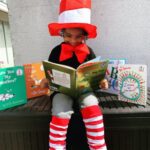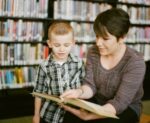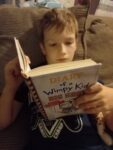This post was written by South African mom blogger and educator Philippa Fabbri who you’ll find at Elsen here.

One of the 8 tools necessary for academic success is reading with understanding.
Reading is all about “cracking the code.“ It is a mechanical skill that does not imply that understanding takes place at the same time.
A child may be able to read well but not know what he has read. As a result, some children do not do well in comprehension activities.
It impacts on story sums and problem-solving in Maths and being able to learn or study for tests and exams.
Students’ reading abilities depend upon many different factors and influences. For some students, regrettably, reading can be frustrating and at times, seemingly futile.
Decoding and Comprehension
Reading can be broadly divided into two academic skills:
(1) word decoding, or accurate and rapid reading of words, and
(2) comprehension, or understanding the intended message of a written passage.
Both decoding and comprehension are facilitated by a combination of neurodevelopmental functions.
Reading Milestones
There are six stages/milestones in the development of reading, which spans from birth to adulthood.
Stage 0: pre-reading (approx 6months – 6 years)

This stage is developed when stories are read to the child by someone who understands and appreciates that the child has an interest in books and reading. Giving the child crayons, paper, books, etc. encourages the child to participate in the reading process.
Stage 1: initial reading, writing and decoding (approx 6 or 7yrs)

During this stage children learn that there is a relationship between the letters/symbols and sounds; between printed and spoken language.
Stage 2: Confirmation and fluency (7 – 8 years old)

When children can read simple, known stories with increasing fluency.
Stage 3: Reading to learn the new (9 – 13 years old)

This stage is characterized by using reading to learn and gain new knowledge.
Stage 4: Synthesizing information and applying perspective (14 – 17 years old)

Reads widely from a large variety of reading materials is characteristic of this stage in high school. The reading material becomes more complex and the child is able to read and understand the reading material from different viewpoints.
Stage 5: Critical literacy in work and society (from 18 years)
In the last stage of reading development, reading is used for personal growth on both a personal and professional level. Reading is a long-term developmental process.
High school stage and beyond:
The ultimate goal of reading is the extraction of information — for meaning, entertainment, wisdom, etc.
If you don’t enjoy reading yourself – it’s going to be difficult to motivate your child to read if they don’t want to and maybe the reasons for you not being a bookworm apply for your child too.
Reading needs to become automated, mechanical…like you don’t need to think too hard about the process, you just do it. If it still needs a lot of word decoding which requires a lot of brain power, chances are your child will start to develop a negative attitude towards reading.
Problems associated with reading:
Here are some of the red flags to look out for
- Difficulty with rhyming, blending sounds, learning the alphabet, linking letters with sounds
- Difficulty learning rules for spelling
- Difficulty remembering the easy “little” words – the, of, said – that cannot be sounded out
- Slow, word-by-word readers; great difficulty with words in lists, nonsense words and words not in their listening vocabulary
- They become very reluctant readers

Where can I take my child to be assessed?
A remedial therapist can assess.
They will assess the following:
- oral language word recognition,
- decoding,
- spelling,
- fluency,
- reading comprehension,
- phonological processing and
- vocabulary knowledge
TEN TIPS TO CREATE AN ENTHUSIASTIC READER (for parents)

- While reading make stories interactive, stimulating, exciting, and educational: let your child take part in the reading of the story – if child can’t read well, ask him to tell you what he can see in the picture(s) if there are any,
- Use age appropriate stories that will interest your child (pictures, colours, topic very important),
- Be an example to your child: let your child see you reading: your child imitates your behavior – reading is a part of life…not just books,
- Make an effort to expose your child to the skill of reading…cereal box, signs on the road, subtitles on TV,
- If your child has a favourite story and wants to read it all the time, let him or read it to him, NEVER discourage reading,
- Expose your child to a variety of fiction and non-fiction books (topics),
- Teach your child to treasure books, look after them and treat them with respect – keeping them clean and in good condition (discourage writing in books, esp in ink),
- Always have books available and within easy reach of your child so that he can take a book and look through it by himself,
- Encourage your child to write his own story and illustrate it if he wants to, let him read his story to you and ask you questions about it…..make sure you listen
- Don’t nag! Seek out support from someone else…that isn’t you.
Dyslexia checklist available here:
If you found this post interesting please share it with your friends and remember to follow us on Facebook, Twitter, Pinterest and Instagram and join our awesome group called Mommy’s Me Time.



Leave a Reply